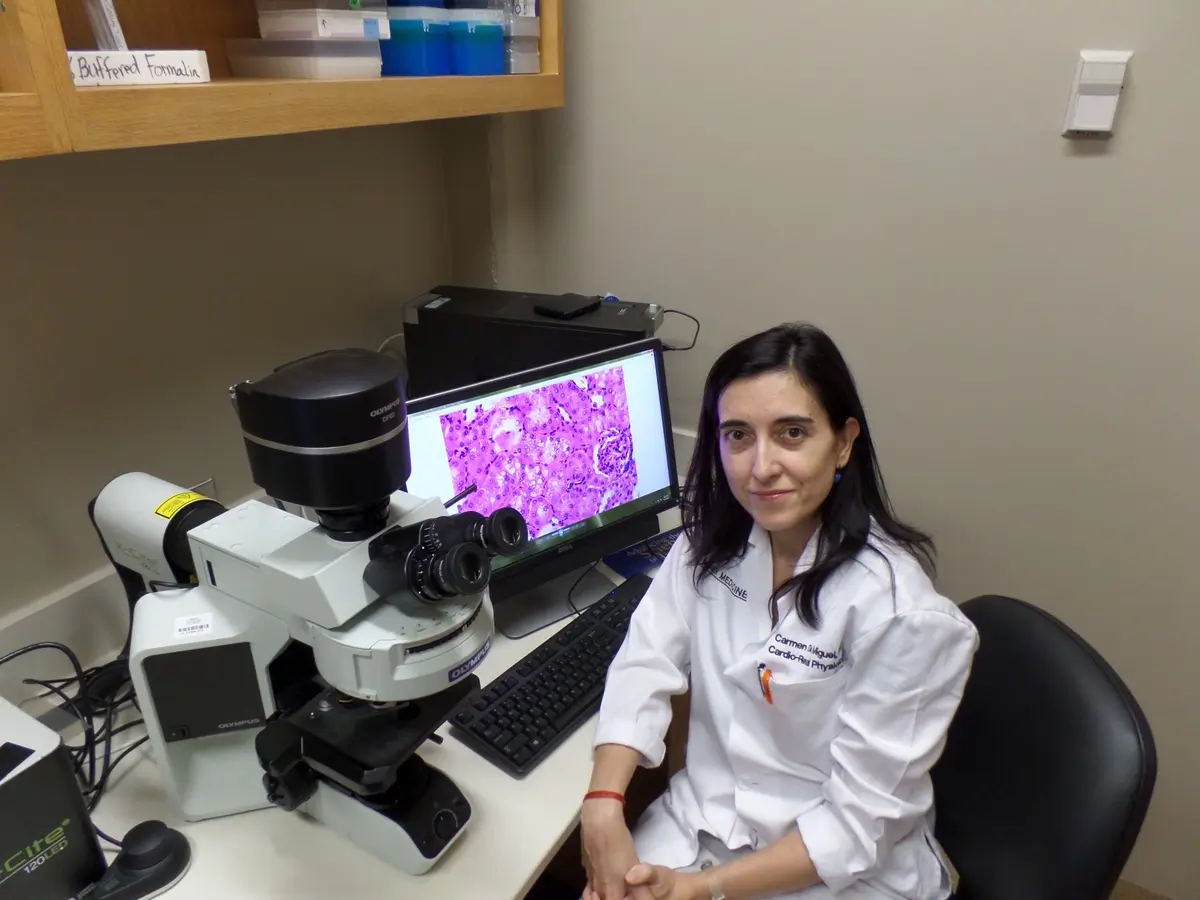6-Month Project Update
My initial results showed the capability of human saRNADOC2b to increase endogenous DOC2b gene expression and protein levels in both primary non-diabetic human islets and two human clonal beta cell lines, validating the feasibility of my approach. Previously, our lab and others showed ectopic expression of DOC2b in beta cells, with as little as 2-fold, could significantly boost glucose-stimulated insulin secretion. My results show successful boosting of the stimulation index of glucose-stimulated insulin secretion in both primary human islets and human clonal beta cells following RNAiMax (commercial transfection reagent) mediated human saRNADOC2b delivery. These results 2 validated my experimental model where saRNA-mediated increase of endogenous DOC2b level successfully benefits beta cell function, as reported with ectopic DOC2b expression in beta cells before. Excitingly, LL-37 mediated delivery of human saRNADOC2b increased endogenous DOC2b gene expression level and boosted glucose-stimulated insulin secretion in human beta cells, including primary human islets. These results for the first time showed the effectiveness of RNA-binding peptide LL-37 as a carrier of RNA in beta cells. Intriguingly, a marked boost in the glucose-stimulated insulin secretion index in LL-37+ human saRNADOC2b treated beta cells indicates the translational feasibility of LL37 peptide in altering gene expression in human beta-cells.
Challenges/Adjustments: EndoC-βH1 cells are now recognized to have a limited glucose-stimulated insulin secretion capacity. To address this, we purchased a secretion-proficient human clonal beta-cell line EndoC-βH5 and used this cell line as a clonal human beta cell model for functional studies. This line shows robust GSIS in my hands.
Next Steps:
1. Assess if LL-37+saRNA-mediated DOC2b enrichment in primary and clonal β-cells can reduce beta cell ER stress and apoptosis in cytokine-challenged conditions.
2. Generate beta-cell specific aptamer-saRNAs (Scrambl/DOC2b) chimeras in collaboration with Dr. Serafini’s group.
3. Test if beta-cell-specific aptamers can enrich endogenous DOC2b protein and boost insulin secretion in the human beta-cell.
4. Moving forward with my collaborator Dr. Paolo Serafini, I will evaluate the ability of betacell-specific aptamer-saRNA DOC2b chimera-treated human islets to attenuate streptozotocin-induced diabetes in vivo.
Project Description
Type 1 diabetes (T1D) involves reduced function and loss of the insulin-producing beta cells of the pancreas. Current treatment of T1D patients for increased blood glucose levels involves insulin injection. However, the level of insulin injected often does not match the blood glucose level. This frequently results in a decrease in blood glucose level below its normal levels (hypoglycemic episodes). This event is a significant health risk in T1D.
Studies showed that beta cells become less efficient in releasing insulin at very early stages of T1D. During these stages, even a moderate level of insulin release from beta cells results in reduced rates of T1D-related problems. Hence, there is great interest in developing ways to increase the insulin-releasing function of beta cells and maintain the patients’ left-over insulin-secreting beta cells.
Based on this goal, my mentor’s lab and other labs have examined the option for the enrichment of a protein named “DOC2b”, which is important for the controlled release of insulin from beta cells. Our recent studies showed that increasing the amount of DOC2b in beta cells proportionately improves their insulin secreting function, thus making each beta cell more efficient. DOC2b enrichment can also restore the malfunctioning islets (from diabetic humans) to normal islets in petri dishes. Additionally, these beta cells keep their normal insulin production and do not exhaust/ fail. This points towards the exciting possibility that DOC2b plays a role in beta cell survival.
My goal for this project is to discover the methods to increase the DOC2b protein levels in existing insulin-producing beta cells in T1D patients and to study if DOC2b enriched beta cells can resist the damages associated with T1D in living mammals. By pursuing these studies, I will address one very important question: could DOC2b enrichment be a method to preserve and restore the function of human beta cells? If found to be true, this would be significant progress toward the treatment of T1D.












